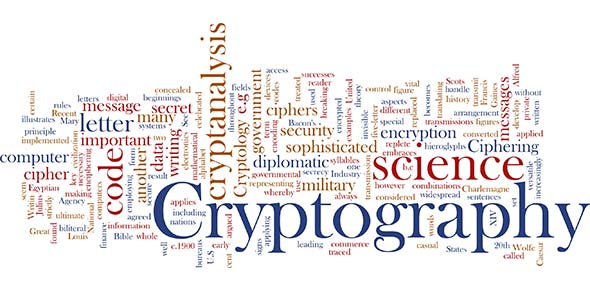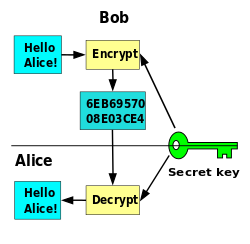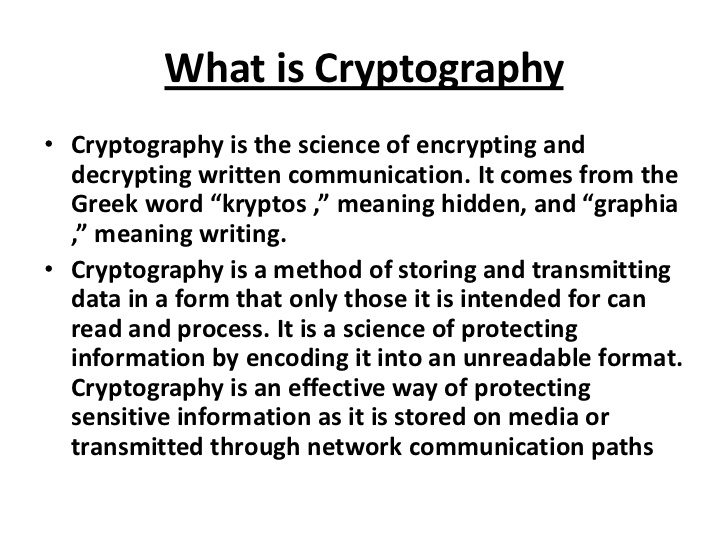(Short) History of Cryptography
“Cryptography is typically bypassed, not penetrated.” Adi Shamir
Cryptography is one of the oldest fields of technical study we can find records of, going back at least 4,000 years. Cryptography probably began in or around 2000 B.C. in Egypt, where hieroglyphics were used to decorate the tombs of deceased rulers and kings. These hieroglyphics told the story of the life of the king and proclaimed the great acts of his life. The ancient Chinese used the ideographic nature of their language to hide the meaning of words. Messages were often transformed into ideographs for privacy, but no substantial use in early Chinese military conquests is apparent. In India, secret writing was apparently more advanced, and the government used secret codes to communicate with a network of spies spread throughout the country. The cryptographic history of Mesopotamia was similar to that of Egypt, in that cuneiforms were used to encipher text. In the famous Greek drama the ‘Iliad’, cryptography was used when Bellerophon was sent to the king with a secret tablet which told the king to have him put to death. The Spartans used a system which consisted of a thin sheet of papyrus wrapped around a staff (now called a “staff cipher”). Another Greek method was developed by Polybius (now called the “Polybius Square”). Julius Caesar used a system of cryptography (i.e. the ‘Caesar Cipher’) which shifted each letter 2 places further through the alphabet (e.g. Y shifts to A, R shifts to T, etc.). The Arabs were the first to make significant advances in cryptanalysis. An Arabic author, Qalqashandi, wrote down a technique for solving ciphers which is still used today. [Cohen, 1990-1995]
 Source: Bryan Schaefer (www.proprofs.com)
Source: Bryan Schaefer (www.proprofs.com)
During the Middle Ages, cryptography started to progress. Venice created an elaborate organization in 1452 with the sole purpose of dealing with cryptography. Leon Battista Alberti is known as “The Father of Western Cryptology” in part because of his development of polyalphabetic substitution. The next major step was taken in 1518, by Trithemius, a German monk who had a deep interest in the occult. In 1553, Giovan Batista Belaso extended this technique by choosing a keyword that is written above the plaintext, in a letter to letter correspondence. In 1628, a Frenchman named Antoine Rossignol helped his army defeat the Huguenots by decoding a captured message. By the 1700’s, “Black Chambers” were common in Europe, one of the most renown being that in Vienna. The father of American cryptology is James Lovell. He was loyal to the colonies, and solved many British ciphers, some which led to Revolutionary victories. The ‘wheel cipher’ was invented by Thomas Jefferson around 1795, and although he never did very much with it, a very similar system was still in use by the US navy only a few years ago. In 1817, Colonel Decius Wadsworth developed a set of two disks, one inside the other, where the outer disk had the 26 letters of the alphabet, and the numbers 2-8, and the inner disk had only the 26 letters. In 1844, the development of cryptography was dramatically altered by the invention of the telegraph. The ‘Playfair’ system was invented by Charles Wheatstone and Lyon Playfair in 1854, and was the first system that used pairs of symbols for encryption. In 1859, Pliny Earle Chase, developed what is known as the fractionating or tomographic cipher. A two digit number was assigned to each character of plaintext by means of a table. Kasiski developed a cryptanalysis method in 1863 which broke almost every existing cipher of that time. The method was to find repetitions of strings of characters in the ciphertext. Just as the telegraph changed cryptography in 1844, the radio changed cryptography in 1895. In 1917, the Americans formed the cryptographic organization MI-8. It’s director was Herbert Osborne Yardley. [Cohen, 1990-1995]
Source: Wikipedia.org
The use of cryptographic machines dramatically changed the nature of cryptography and cryptanalysis. The next major advance in electromechanical cryptography was the invention of the rotor. During WW2, the neutral country Sweden had one of the most effective cryptanalysis departments in the world. In 1948, Shannon published “A Communications Theory of Secrecy Systems.” The story of cryptography would be at an end if it weren’t for the practical problem that in order to send a secret message, an equal amount of secret key must first be sent. [Cohen, 1990-1995]
Source: Slideshare.net
Reference:
Cohen, Fred 1990 – 1995. “A Short History of Cryptography.” Retrieved on March 27th, 2017 from URL: http://web.itu.edu.tr/~orssi/dersler/cryptography/Chap2-1.pdf
Hope you’ll find this post informative.

